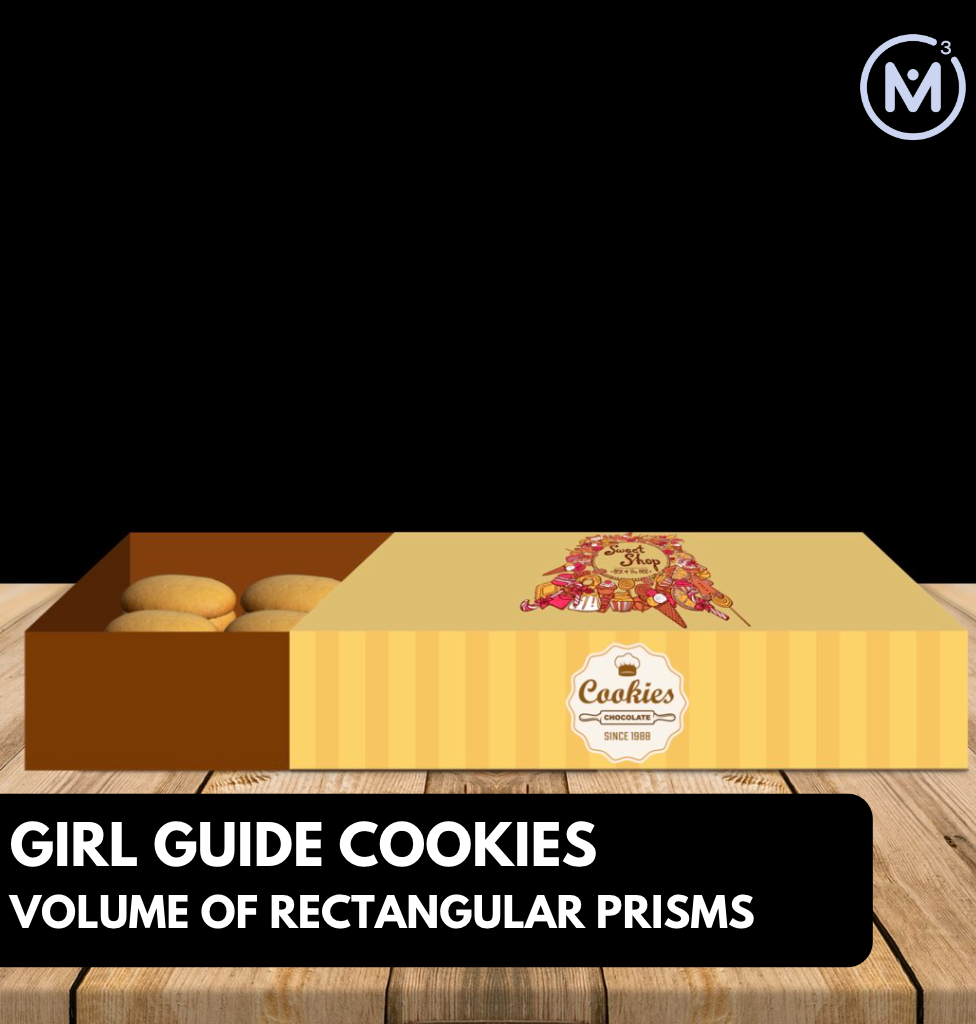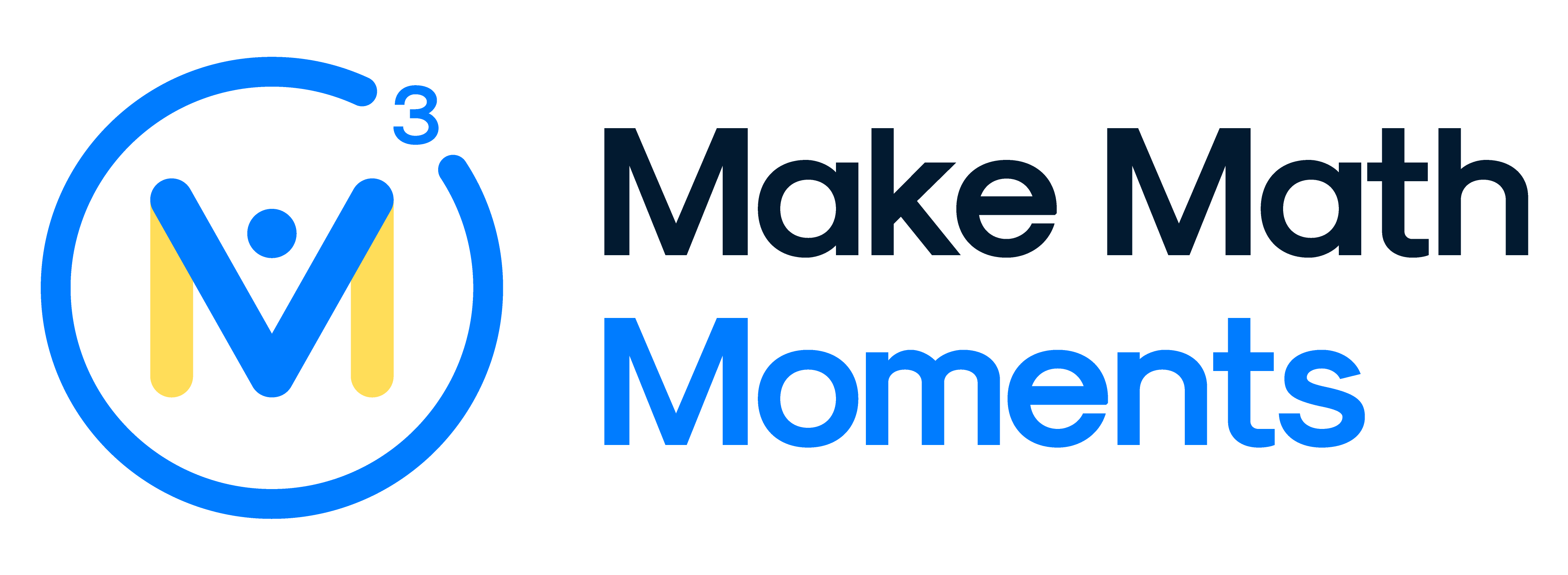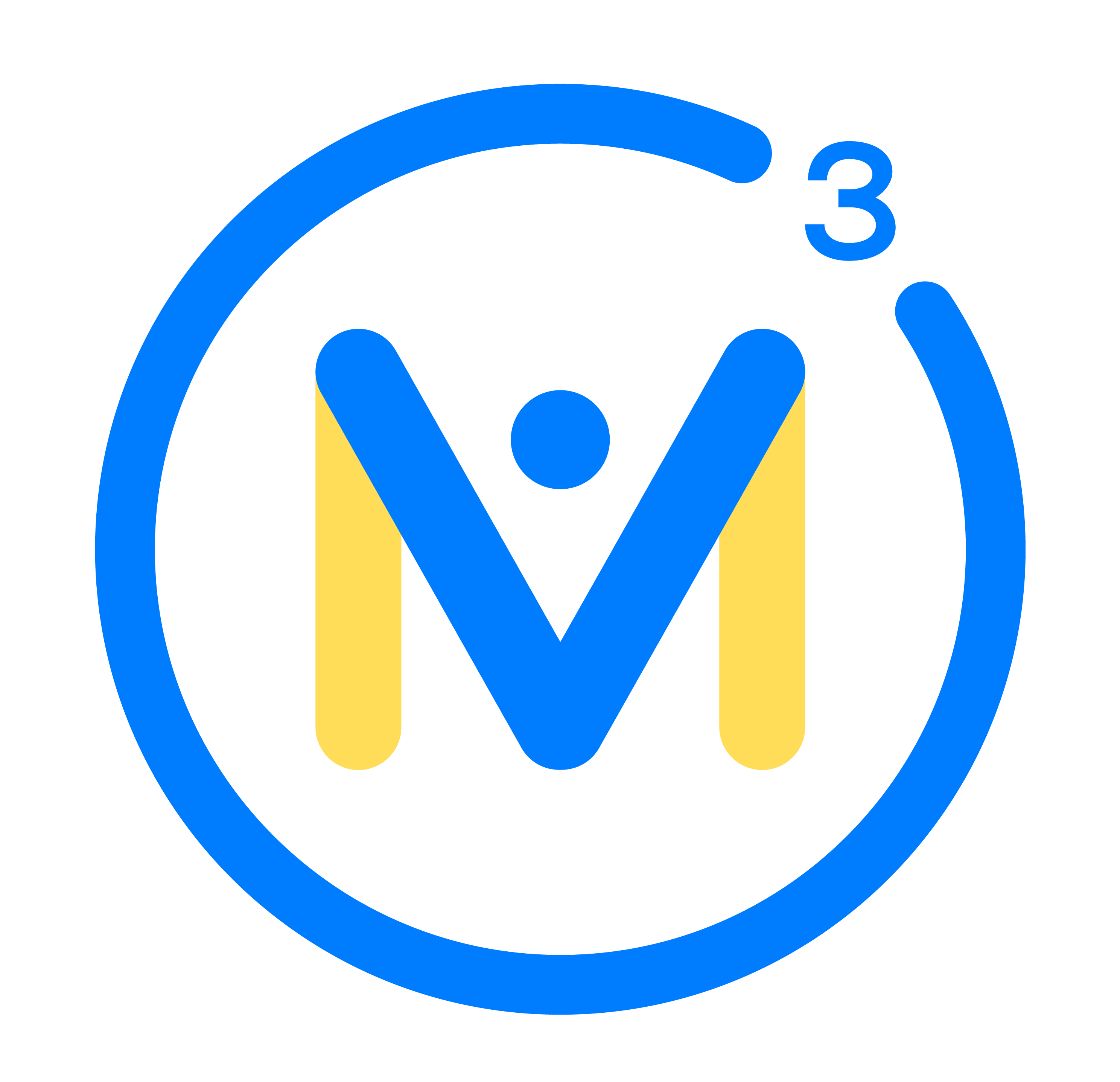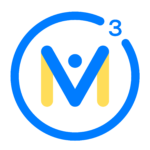GIRL GUIDE COOKIES [DAY 2]
VOLUME OF RECTANGULAR PRISMS
Understand concepts of volume related to rectangular prisms.
Intentionality
Math Talk
Spark Curiosity
Fuel Sensemaking
During Moves
Student Approaches
Next Moves
Consolidation
Reflect and Consolidation Prompts
Resources & Downloads
Educator Discussion Area
Intentionality & Unit Overview

Length of Unit: 5 Days
Access each lesson from this unit using the navigation links below
Students will engage in a number string and a task to develop their spatial sense as it relates to volume and make a connection between addition, multiplication and determining the volume of a rectangular prism.
Intentionality…
In today’s math talk, students will continue to visualize and draw the top from and side view of various rectangular prisms composed of boxes of cookies. They will solve a task that will ask them to determine the volume of dishwasher pods in a bag, using the pods as a non-standard unit of measure. Students will continue exploring how skip counting, repeated addition, and or multiplication are related to volume.
Today’s math talk and task will continue to support the development of the following big ideas:
- Volume and capacity can be measured using non-standard and standard units;
- A rectangular prism has three views. It can be viewed from the top, front and side. Each of these three faces are two dimensional, with a length and a width;
- A rectangular prism has three dimensions, which can be described using three linear measurements; the length, the width and the height;
- The measurements of length, width, and height are used to determine volume;
- Volume can be determined by multiplying the area of the base by the height of the prism;
- Volume is related to the operations of multiplication and addition;
- A solid figure which can be packed without gaps or overlaps using a quantity of unit cubes is said to have a volume of that same quantity of cubic units.
Math Talk
Leverage the Day 1 context, boxes of Girl Guide cookies. Ask the students to imagine that the following prisms will be created by stacking boxes of cookies together. Today, we will use the boxes themselves as the unit of measure.
For each of the prisms below, ask students to draw the top, front and side view of the prism. Determine the total volume in boxes of cookies. Some students may benefit from building these prisms out of linking cubes. Each linking cube represents one box of cookies.
4 boxes by 3 boxes by 3 boxes
2 boxes by 3 boxes by 3 boxes
6 boxes by 2 boxes by 4 boxes
3 boxes by 2 boxes by 2 boxes
The dimension of the first and second box are related, as are the dimensions of the third and fourth. Ask students to explore the transformation and how the dimensions and total volume of these prisms are the same, different.
Facilitator Note:
From box one to two, the number of boxes in the length of the prism is halved, so is the total volume.
From the third to fourth, the length is halved and so is the height of the prism. The volume is fourthed. Although this is not the focus of today’s math talk, these relationships might be interesting for students to investigate. They may even emerged organically as students draw the top, front and side view, and determine the total volume in boxes of cookies.
Consider viewing this short silent solution animation video to help you prepare for facilitating this math talk with your students:
Here is a screenshot of the final frame of the silent solution video:
Spark Curiosity
What Do You Notice? What Do You Wonder?
Show students the following video:
Then, ask students:
What do you notice?
What do you wonder?
Give students 60 seconds (or more) to do a rapid write on a piece of paper.
Replaying the video and/or leaving a screenshot from the video up can be helpful here.
Then, ask students to share with their neighbours for another 60 seconds.
Finally, allow students to share with the entire group. Be sure to write down these noticings and wonderings on the blackboard/whiteboard, chart paper, or some other means to ensure students know that their voice is acknowledged and appreciated.
Some of the noticing and wondering that may come up includes:
- I noticed a kitchen counter.
- I notice a bag.
- I notice that it says “Ultra DishPods”.
- I wonder what it is.
- I wonder if it is dishwasher detergent.
- I wonder how much it costs.
- I wonder how many are in each bag.
- I notice it says “Pro” and “Deep Clean” on it.
At this point, you can answer any wonders that you can cross off the list right away. For example:
- This is a bag of Ultra DishPods dishwasher detergent.
- It was purchased at the Grocery Store.
- The cost for this bag is $25.00
Estimation: Prompt
After we have heard students and demonstrated that we value their voice, we can share the following video which will reveal one of the first wonders we will challenge them to think through:
Verbalize the following prompt for students:
How many dishwasher detergent pods are in this bag?
How do you think they might be organized?
Make an estimate.
We can now ask students to draw a diagram of the dishwasher pods viewed from the front, side and top of the bag. Encourage them to actually identify the dishwasher pods pictorially, concretely or even using hand gestures to represent how they would be arranged in their columns and rows. Encourage students to engage in a conversation about how many dishwasher pods they would see from the top of the bag, and how they know.
Estimation: Partial Reveal
Share the following screenshot to allow students to update their original estimates.
How does this change their original estimates?
Consider sharing another perspective of a single 5 pod by 4 pod “layer” of 20 pods.
Encourage students to update their estimate based on this new information and share out their updated estimates based on their assumptions of how many “layers” of 20 pods are in this bag. Estimates between 80 and 160 are likely, however some students might notice a “shadow” less than halfway up the bag which might lead them to have estimates more in the 80 to 100 range.
Encourage students to explain their reasoning and take this opportunity to highlight the “array” that is formed for the base of this rectangular prism and how multiplying (or repeatedly adding) by the number of “layers” of that base will result in the total number of pods (i.e.: a conceptual algorithm for finding the volume of a rectangular prism).
Now you can confirm for students how many layers are in the bag of dishwasher pods:
If the pods in this bag are stacked 5 pods high, how many dishwasher pods are in this bag?
Estimation: Reveal
Show students the following reveal video and celebrate close estimates and their reasoning:
Here is a screenshot of the final frame that you might consider leaving up for students:
Fuel Sense-making
Crafting A Productive Struggle: Prompt
We can now give students the opportunity to productively struggle without the use of a calculator:
Prompt students by stating:
If the pods were sold individually, what would be the cost for one dishwasher pod if the total cost for this bag was $25.00?
Students should reason through this prompt without the use of a calculator. Visual or concrete representations are expected of all learners avoiding the reliance on a known rule or procedure such as “just move the decimal point over two spots”.
Facilitator Move:
If a student is pushing back on justifying their reasoning why moving the decimal point over two spots is not sufficient, consider asking them what they would do to convince someone who doesn’t know that rule works? How could you get them to trust that your thinking is reasonable?
Pushing students to reason and prove is incredibly important in math class and demanding this thinking of all learners is one of the many teacher moves we can utilize to ensure that we can meet the needs of all learners in our classroom through differentiating through purposeful questioning in the moment
During Moves
While Students Are Productively Struggling…
Login/Join to access the entire Teacher Guide, downloadable slide decks and printable handouts for this lesson and all problem based units.
Student Approaches
Student Approach #1: Partitive Division Through Fair Sharing
Login/Join to access the entire Teacher Guide, downloadable slide decks and printable handouts for this lesson and all problem based units.
Student Approach #2: Scaling In Tandem With An Area Model
Login/Join to access the entire Teacher Guide, downloadable slide decks and printable handouts for this lesson and all problem based units.
Student Approach #3: Scaling In Tandem With A Double Number Line
Login/Join to access the entire Teacher Guide, downloadable slide decks and printable handouts for this lesson and all problem based units.
Next Moves
Consolidation
Login/Join to access the entire Teacher Guide, downloadable slide decks and printable handouts for this lesson and all problem based units.
Reflect and Consolidation Prompts
Provide students an opportunity to reflect on their learning by offering this consolidation prompt to be completed independently.
Consolidation Prompt:
Login/Join to access the entire Teacher Guide, downloadable slide decks and printable handouts for this lesson and all problem based units.
We suggest collecting this reflection as an additional opportunity to engage in the formative assessment process to inform next steps for individual students as well as how the whole class will proceed.
Resources & Downloads
Login/Join to access the entire Teacher Guide, downloadable slide decks and printable handouts for this lesson and all problem based units.
Printable Lesson Plan PDF
Videos, Images & Media Files
Apple Keynote Presentation
Powerpoint Presentation
Printable Consolidation Prompts
Educator Discussion Area
Login/Join to access the entire Teacher Guide, downloadable slide decks and printable handouts for this lesson and all problem based units.
Explore Our 60+ Problem Based Units
This Make Math Moments Lesson was designed to spark curiosity for a multi-day unit of study with built in purposeful practice, number talks and extensions to elicit and emerge strategies and mathematical models.
Dig into our other units of study and view by concept continuum, grade or topic!


![Girl Guide Cookies [Day 2] - How Many Pods - 02 - Math Talk Silent Solution Screenshot Image.001](https://learn.makemathmoments.com/wp-content/uploads/2021/06/Girl-Guide-Cookies-Day-2-How-Many-Pods-02-Math-Talk-Silent-Solution-Screenshot-Image.001.jpeg)
![Girl Guide Cookies [Day 2] - How Many Pods - 04 - Spark Image.001](https://learn.makemathmoments.com/wp-content/uploads/2021/06/Girl-Guide-Cookies-Day-2-How-Many-Pods-04-Spark-Image.001.jpeg)
![Girl Guide Cookies [Day 2] - How Many Pods - 06 - Spark Estimate Image.001](https://learn.makemathmoments.com/wp-content/uploads/2021/06/Girl-Guide-Cookies-Day-2-How-Many-Pods-06-Spark-Estimate-Image.001.jpeg)
![Girl Guide Cookies [Day 2] - How Many Pods - 07 - Spark Estimate Update Image.001](https://learn.makemathmoments.com/wp-content/uploads/2021/06/Girl-Guide-Cookies-Day-2-How-Many-Pods-07-Spark-Estimate-Update-Image.001.jpeg)
![Girl Guide Cookies [Day 2] - How Many Pods - 08 - Spark Estimate Update Image 2.001](https://learn.makemathmoments.com/wp-content/uploads/2021/06/Girl-Guide-Cookies-Day-2-How-Many-Pods-08-Spark-Estimate-Update-Image-2.001.jpeg)
![Girl Guide Cookies [Day 2] - How Many Pods - 10 - Spark Estimate Reveal Image.001](https://learn.makemathmoments.com/wp-content/uploads/2021/06/Girl-Guide-Cookies-Day-2-How-Many-Pods-10-Spark-Estimate-Reveal-Image.001.jpeg)
![Girl Guide Cookies [Day 2] - How Many Pods - 12 - REVEAL Image.001](https://learn.makemathmoments.com/wp-content/uploads/2021/06/Girl-Guide-Cookies-Day-2-How-Many-Pods-12-REVEAL-Image.001.jpeg)
